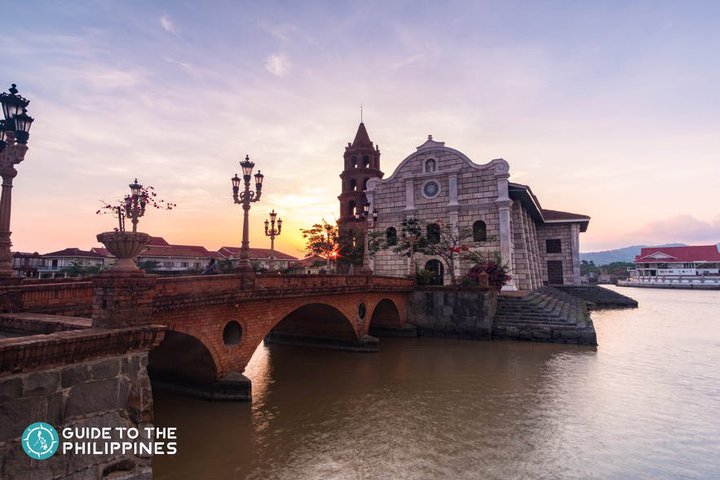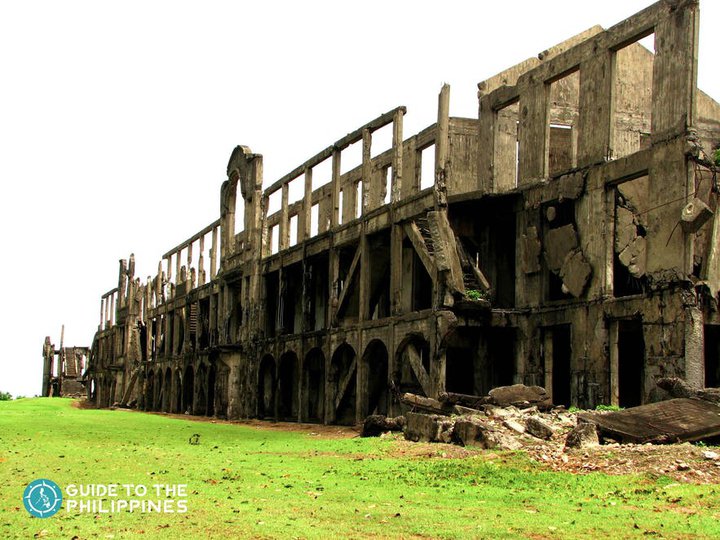Top 14 Tourist Spots in Bataan | Historical and Nature Destination
Top 14 Tourist Spots in Bataan | Historical and Nature Destination
Explore Bataan, Philippines, a top heritage and ecotourism destination. Here’s a list of awesome experiences, local eats, and go-to sites that you should take note of.
In the Philippines, the province of Bataan is considered the smallest province in Central Luzon, with only 1,372.98 square kilometers of total land area. But don’t let that fool you, because it’s packed with exciting tourist spots.
Bataan is rich in natural wonders such as stunning beaches, majestic mountains, and grandiose waterfalls.
The local tourism and government offices’ effort to preserve the natural ecosystem of Bataan has made it into a rising eco-tourism destination.
You can go on a hike, conquer bike trails, take on the longest zipline in Central Luzon, or swim at the many beach resorts in the province. Adventure seekers wouldn’t run out of things to do in Bataan!
Apart from its many natural and man-made wonders, Bataan’s history is what truly makes it a must-visit destination in Luzon.
You will find several World War II shrines, monuments, and museums in Bataan that highlight the heroism and humanity’s triumph over war.
Truly, the province of Bataan has a lot of wonders waiting to be explored.
1. Visit Las Casas Filipinas De Acuzar
Photo by travelswithahobo.com
Las Casas Filipinas de Acuzar is the Philippines’ first-ever heritage resort located in Bagac, Bataan.
This 400-hectare picturesque resort showcases over 30 heritage homes from different parts of the Philippines fully-restored brick-by-brick to their glory days.
This living museum actually started with just one restored casa (house), the Casa Cagayan.
This traditional Filipino home dates back to the early 1900s and served as the family vacation home of Jose Acuzar, the resort’s owner.
Since then, Acuzar started buying and even salvaging fragments of old, abandoned houses all over the country. He transported them to his riverfront property in Bataan and started renovating them.
Here are some of the top things you can do when doing an excursion in Las Casas Filipinas de Acuzar that you should add to your Bataan tour.
Join a Walking Tour and Travel Back in Time to Old Manila
Las Casas Filipinas de Acuzar has three types of walking tours: Weekday Walking Tour, Weekday Premiere Heritage Tour, and the Weekend Walking Heritage Tour.
The tour guides, who are wearing traditional Filipino clothing, will walk you through the entire property and tell you the unique stories and history of each casa.
Discover the hidden hallways and secret sliding doors in old Ilocano homes.
Feel the cool but rough exteriors of Casa Vyzantina, a traditional Bahay na Bato (house made of stone).
Step into the replica of the opulent Hotel De Oriente, the Philippines’ first luxury hotel in Binondo.
You can also take a panoramic shot of the stunning Paseo Escolta, which pays tribute to the one buzzing business center of Escolta in Manila.
Witness a Live Kundiman and Folk Dance Performance
A kundiman is a genre of traditional love songs in the Philippines.
You can enjoy a lavish dinner under the stars while a live kundiman band serenades you with age-old Filipino songs like Paruparong Bukid and Leron, Leron Sinta.
Resort employees and groups of local students perform Filipino folk dances such as singkil and tinikling. It’s an amazing cultural and dining experience that you should include in your itinerary.
Take a Dip in a Batis-Inspired Swimming Pool
Oddly-shaped and with big, smooth rocks adorning one of the pool’s edges, this pool takes inspiration from typical batis (creek, or small pond) that you can find in the province.
Unlike typical pools that have intricate or simple tile designs at the bottom, the batis-inspired swimming pool has an uneven, slightly rough floor that adds to its rustic feel.
2. Explore the Hidden Coves at Five Fingers
Mariveles, Bataan is getting a lot of social media attention thanks to its cove-to-cove hopping. Aptly named Five Fingers, these hidden coves and points look like five fingers on the Bataan map.
The one-day tours allow you to explore the hidden wonders of Five Fingers in Mariveles, Bataan, as well as neighboring sites like the Sisiman Lighthouse, the Sisiman grotto, and the Laki Beach.
Here are the points you should visit during your cove-to-cove hopping.
Go Trekking at Cochino’s Point
The word “cochino” means pig in Spanish. Cochino’s Point is the first stop where a short but challenging 20-minute trek will give you beautiful views of the cliffs, sea, hills, and the majestic Mt. Mariveles.
Cochino’s Point has a secret cave that’s ideal for cooling off after that challenging trek.
See the Natsu Lagoon at Talaga Point
If you’ve always wanted to try cliff jumping, you’ll love the second stop of the Five Fingers cove-to-cove hopping.
Talaga Point’s 20-foot cliff is ideal for an adrenaline-pumping cliff jump that will lead you to the Natsu Lagoon. The world natsu means summer in Japanese.
Talaga’s Point is also home to the Apatot Cove’s beach, aptly named because of the abundance of apatot trees in the area. It’s a perfect spot for beach swimming.
See the Nagmandala Rock at Hornos Point
Also called Puntang Mahaba, Hornos Point is the longest of the five “fingers” where you can find the Pebble Cave, a famous spot for prenuptial photos.
Hornos Point is where you’ll find the stairway-like formations of the Nagmandala Rock with clear and inviting surrounding waters.
Have a Snack at Naiklec Point
The “ring finger” (fourth finger) is called Naiklec Point, which is the home of the Mawakis Cove. Majority of the Five Fingers cove-to-cove tours stop here for a late lunch or snack.
Jump Off the 40-ft Cliff at Longos Kawayan Point
This last stop is famous for its 40-ft cliff jump found at the Tinanlakan Lagoon. The Longos Kawayan Point has a lunch area for tour participants as well as a beach camping site at the Aglaloma Beach.
The fifth finger is also the home of the Nagbintana Arch rock formation and the Latain Point, an ophiolite rock formation.
3. Learn More About History at the Mt. Samat Shrine of Valor
Located at the peak of Mt. Samat in Pilar, Bataan, the Shrine of Valor is probably the most important and recognizable World War II site in the Bataan map.
Also called the Dambana ng Kagitingan, the Shrine of Valor is a memorial cross that pays tribute to the heroism of the Filipino and American troops when the Japanese army attacked the Philippines during the said war.
The memorial cross is 301-feet tall and features the bas reliefs of the country’s national heroes: Dr. Jose Rizal, Andres Bonifacio, Emilio Aguinaldo, Antonio Luna, Lapu Lapu, and Gabriela Silang to name a few.
The stunning sculptures also include key historical events of the Philippines, including the execution of Dr. Jose Rizal and the Battle of Bataan.
Collectively, the sculptures are called Nabiag Nga Bato, which means “living stone” in the local dialect of Ilocano.
Visitors can enjoy the majestic views of the Manila Bay and the Bataan Peninsula at memorial cross’ viewing deck. This tourist attraction is often combined with other landmarks in a heritage tour of Bataan.
4. Visit the Turtles at the Pawikan Conservation Center
The Pawikan Conservation Center in Morong, Bataan is a safe haven for Philippine pawikan (sea turtle). The species face several threats yearly, including egg gathering, poaching, illegal fishing, and slaughter.
The conservation center provides protection as well as facilities for hatching and healing.
It’s best to visit during the months of August until February when the female turtles make their way to the shore to lay eggs.
During this peak season, locals and tourists would take turns patrolling the shores to protect the eggs and even watch them hatch.
In November, during the week-long Pawikan Festival, you can witness a ritual wherein they release the turtle hatchlings back into the sea. It’s a unique experience that you can experience during a Bataan tour.
5. Connect with Nature at the Bataan National Park
Located in Orani, about 40 minutes from the Bataan Highway, the Bataan National Park is the last remaining closed-canopy dipterocarp forest in the whole Central Luzon.
It’s the home of several wildlife species including giant fruit bats, wild monkeys, wild boars, civet cats, eagles, and pygmy woodpeckers.
Thousands of fruit-bearing trees, including coffee, jackfruit, guyabano, and lanzones.
Covering about 23,688 hectares, the Bataan National Park is also the home of two majestic falls, the Pasukulan, and the Dunsulan Falls.
If you want to spend time with nature, this is the place to be, particularly during sunset.
6. Check out the Bataan World War II Museum
Strategically located at the back of the Balanga Elementary School, the Bataan World War II Museum is the go-to place to learn about the province’s participation in the world event.
The museum houses war memorabilia and dioramas, particularly those from the infamous Bataan Death March in 1942, wherein thousands of Filipino and American soldiers marched nearly 69.6 miles from Bataan to Tarlac.
As the name suggests, thousands died during this horrible event. Take a short walk inside the Balanga Elementary School grounds and you’ll find the Surrender Site Marker.
It features a life-size statue of Major General Edward P. King Jr. and his party as they make a painful decision. Today, the marker is a painful reminder of what transpired in the province during the not-so-distant war.
7. Go Birdwatching at the Balanga Wetland and Nature Park
International bird watchers, tourists, and locals are flocking to the Balanga Wetland and Nature Park to see migratory birds in their natural habitat.
The park has recorded about 35 species and 15 bird families, thanks to the city’s wetlands, mudflats, and mangrove forests. The best time to catch these birds in action is early in the morning.
8. See the ruins at Corregidor Island
Even if Corregidor Island is located in Cavite, people associate it more with Bataan because it’s just a short distance away.
You can walk among the ruins, check out the tunnels and cannons, and even go ghost-hunting if you’re brave enough. The historic island is included in many Bataan tours.
9. Visit the Zero Kilometer Marker
During the Bataan Death March, the troops marched from Bataan all the way to Capas, Tarlac. Today, these Zero KM Markers are marked with an obelisk as well as a bayonet with a soldier’s helmet thrust into the ground.
A zero kilometer (km) or mile marker is used as control points to measure distances.
Bataan has two Zero KM Markers because the bloody Bataan Death March in 1942 kicked off from two points in the province: from Mariveles on April 10 and from Bagac in April.
10. Learn About the Filipino-Japanese Friendship Tower
Also known as the Japan-Philippines Friendship Tower, this towering symbol of reconciliation and peace is strategically located 10 minutes away from the Zero KM Marker in Bagac, Bataan.
It was built in 1975 by a Japanese Buddhist organization, Kosei Kai Group. The white structure stands 27-meter tall and features a Buddhist bell and three pillars that are connected by multi-layer rings.
Sometimes called the Bagac Friendship Bell, the structure is a fitting reminder of the renewed friendship between the Philippines and Japan.
11. See the Flaming Sword in Pilar, Bataan
This historical landmark in Pilar, Bataan is called such because it symbolizes the bravery of the Filipino people during the time when peace and democracy were threatened by external forces.
The landmark is actually a giant hand holding a 30-foot long sword. Made of concrete and steel, the Flaming Sword stands proudly in front of the Municipal Hall of Pilar.
12. Find the Fall of Bataan Marker
The province of Bataan will never forget the date of April 9, 1942 for two reasons.
First, it was the tragic day that Bataan officially fell into the hands of the Japanese forces when Major General Edward P. King Jr. signed the surrender document.
Second, it was the day when the ties between the Filipinos and American forces, and the two countries for that matter, was sealed in blood.
Found in the capital city of Balanga, the Fall of Bataan Marker is a reminder of that tragic time in history and the friendship between the US and the Philippines.
13. Visit the Bataan Technology Park
The park used to be the home of the Philippine Refugee Processing Center (PRPC).
The center was a training and transition center for Indochinese refugees from Cambodia, Laos, and Vietnam who fled to the Philippines in the 1970s.
The former training center is now a techno-economic zone that provides business and employment opportunities for the people of Bataan.
There’s a museum where you can see evidence of the camaraderie between the Indochinese refugees and Filipinos.
14. Have a Gastronomic Food Trip
Bataan is just a short distance to the country's culinary capital, the province of Pampanga.
And because of this, you'll find that the majority of the local dishes in Bataan are inspired by the Kapampangan cuisine of Pampanga.
You will also find other international cuisines in Bataan, including Italian, Japanese, and Vietnamese.
Plan Your Ultimate Bataan Tour This Year!
The province’s rich history has provided the Bataan map with a long list of must-visit World War II sites. Bataan’s penchant for preserving the past and its natural beauty give people more reason to visit the province for a week-long adventure.
Use this guide to plan your ultimate Bataan trip. The activities we mentioned here not only give you an overview of what to expect during your tours but also information about Bataan’s secret coves and lagoons.
SOURCE: https://guidetothephilippines.ph/articles/what-to-experience/bataan-tourist-spots
0 Likes1 Reply
Thanks


























